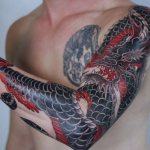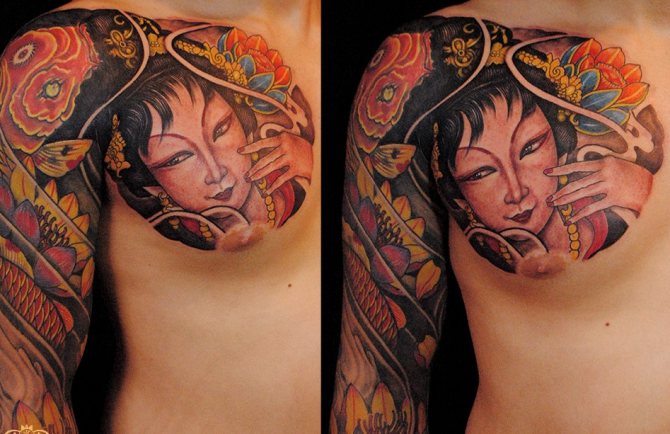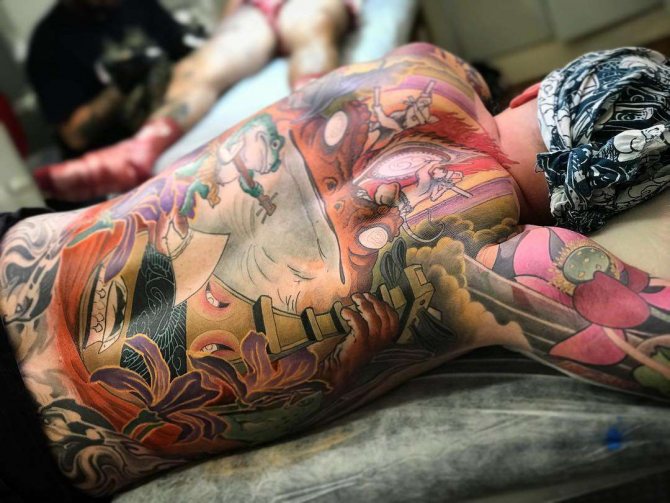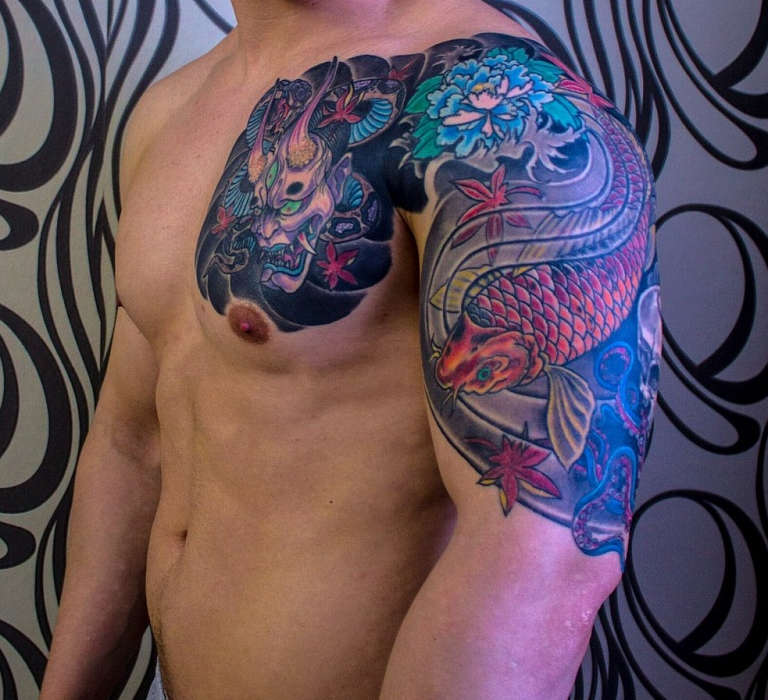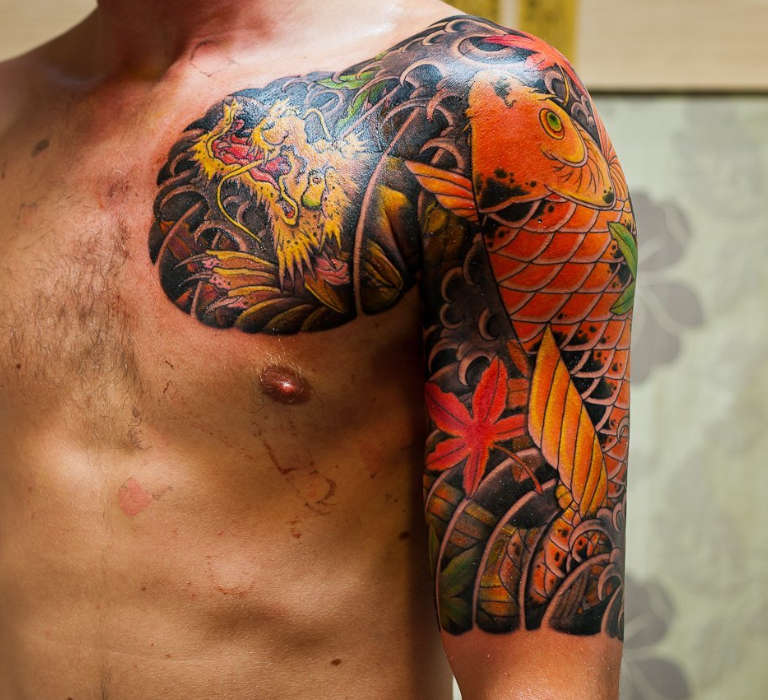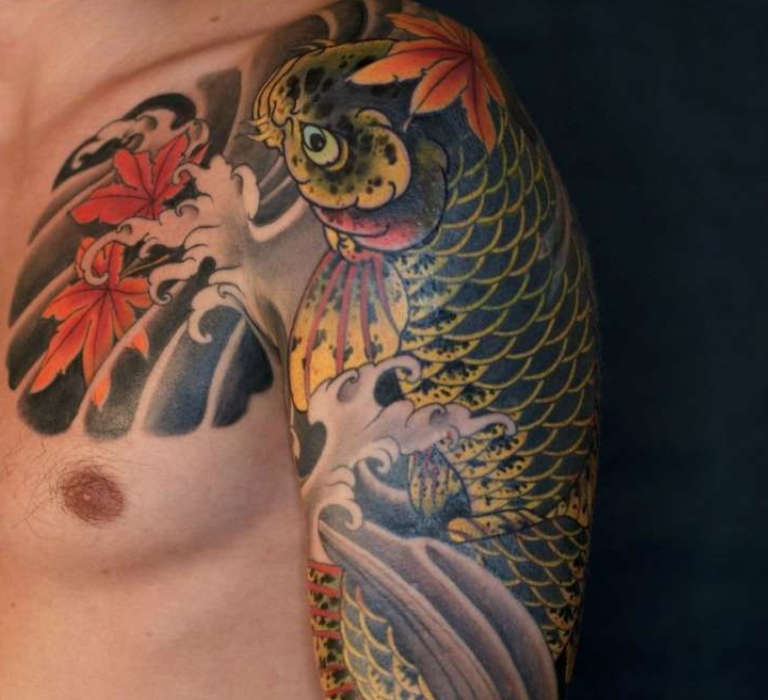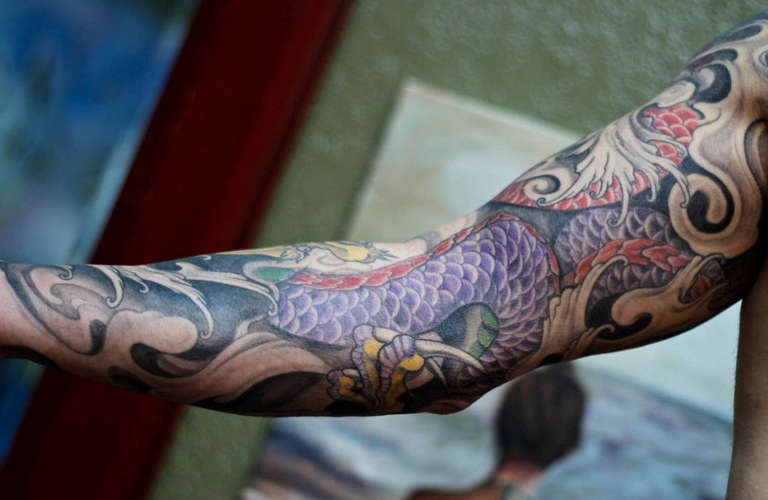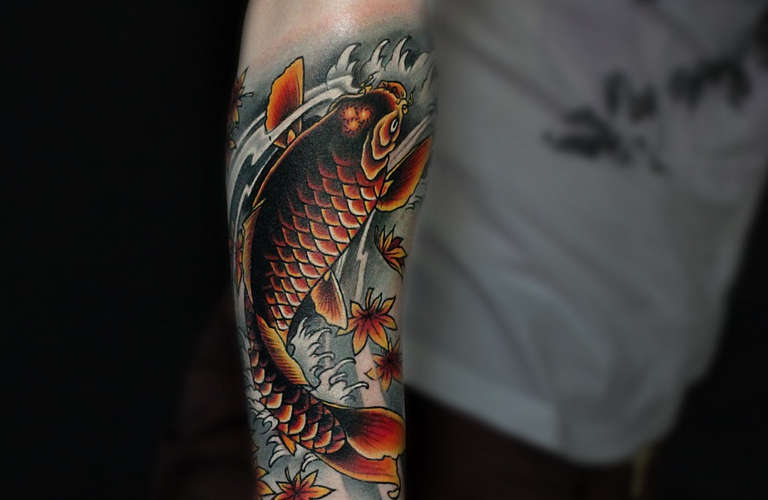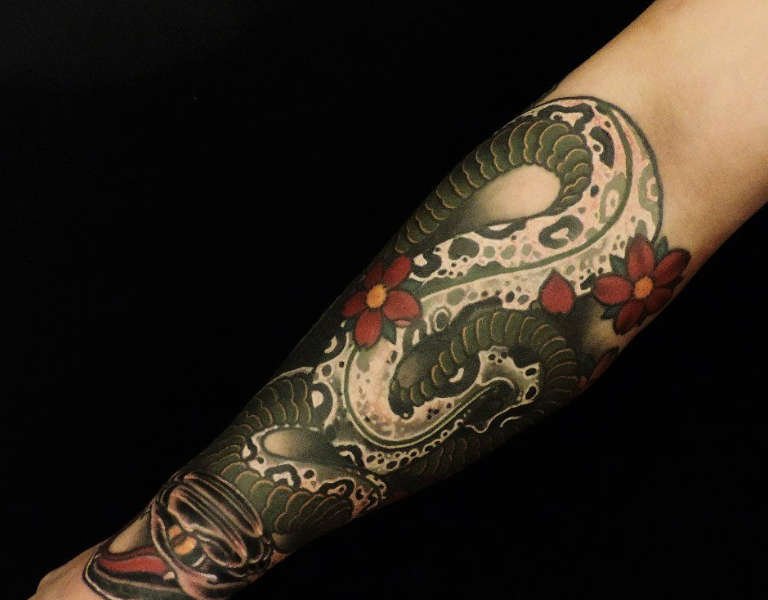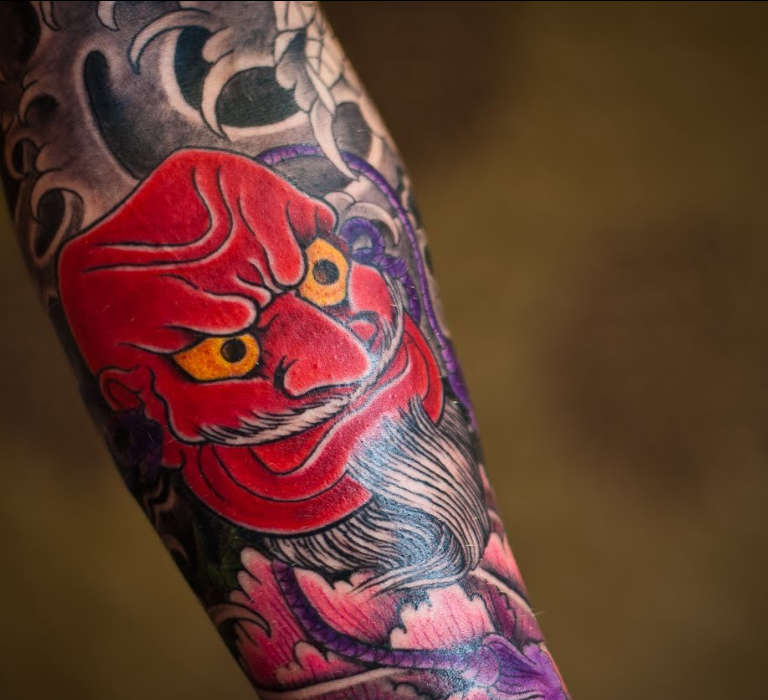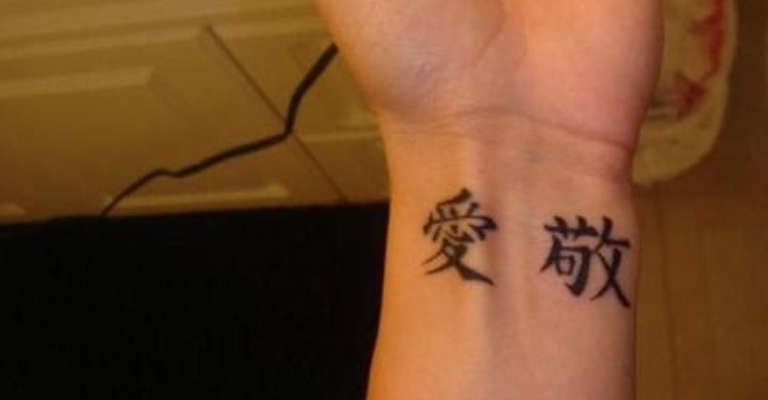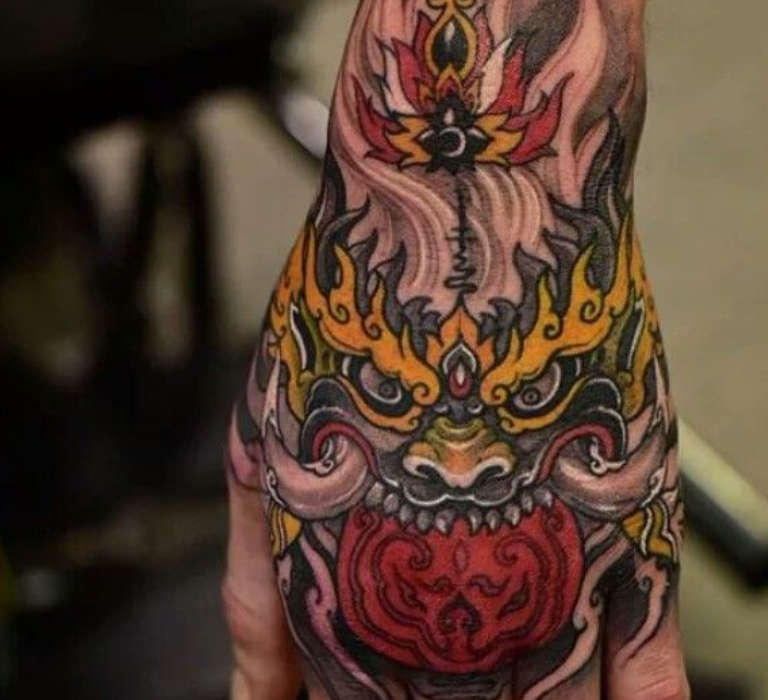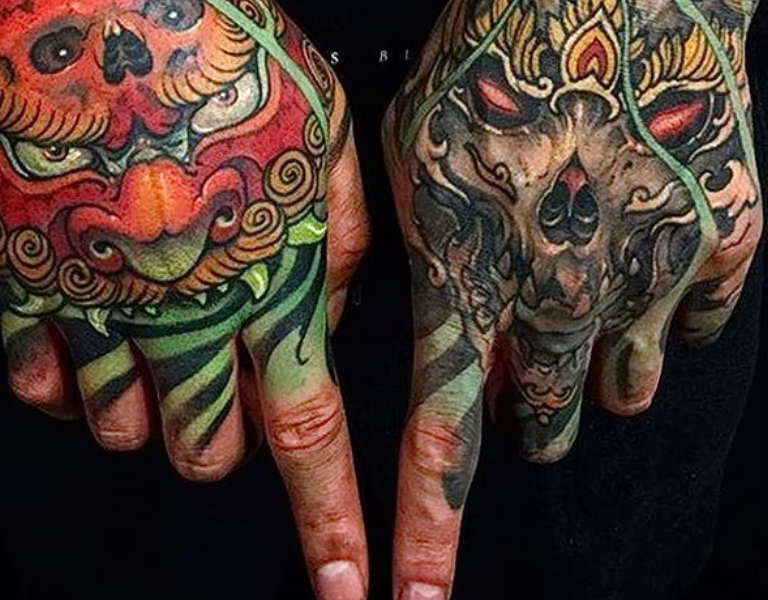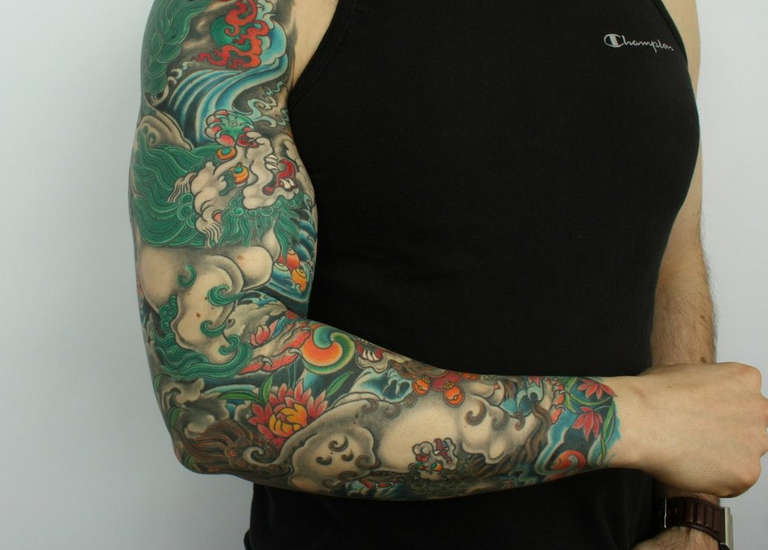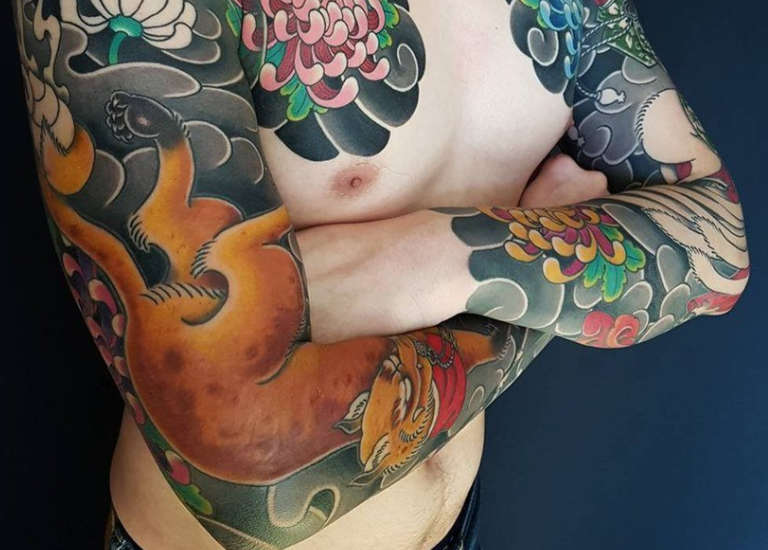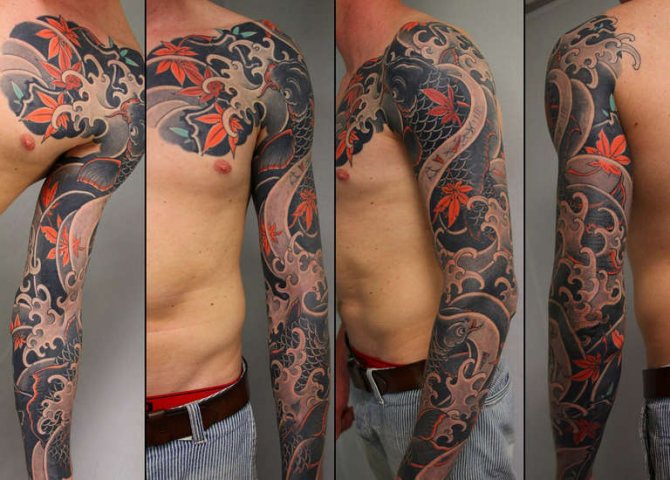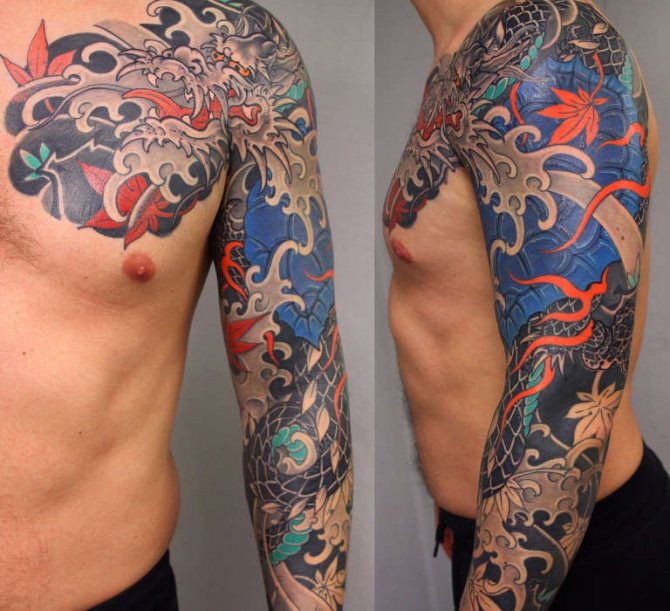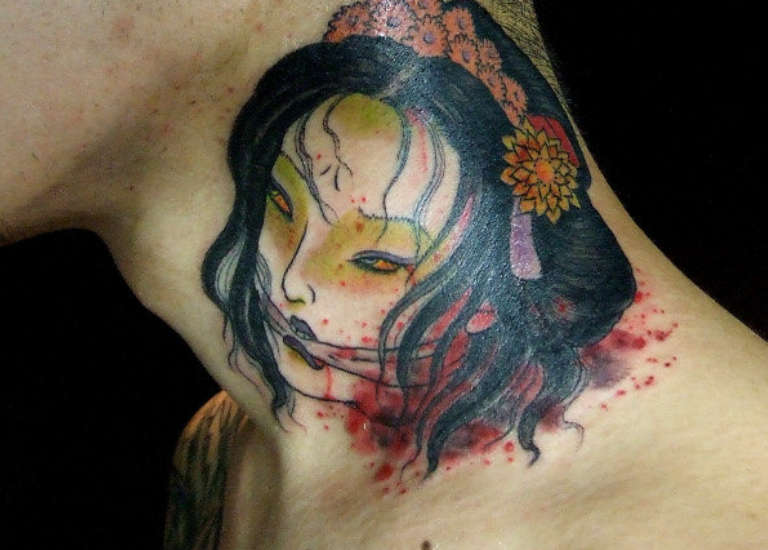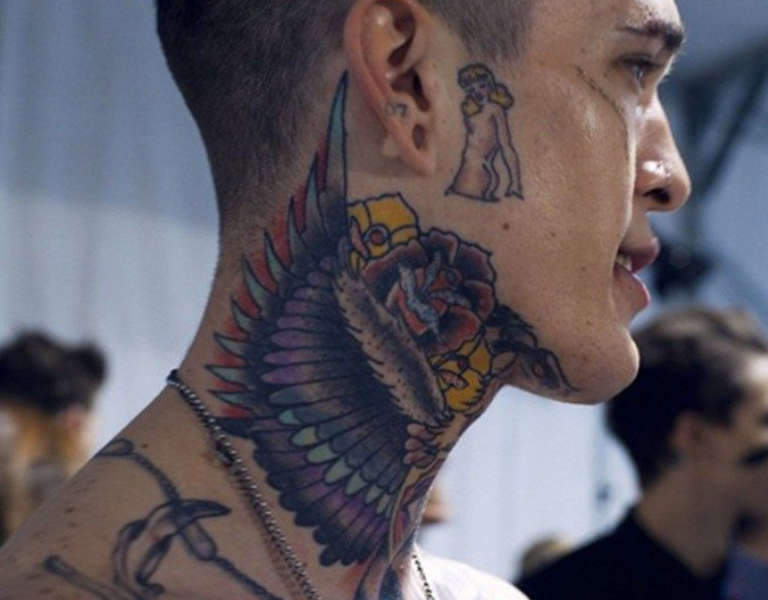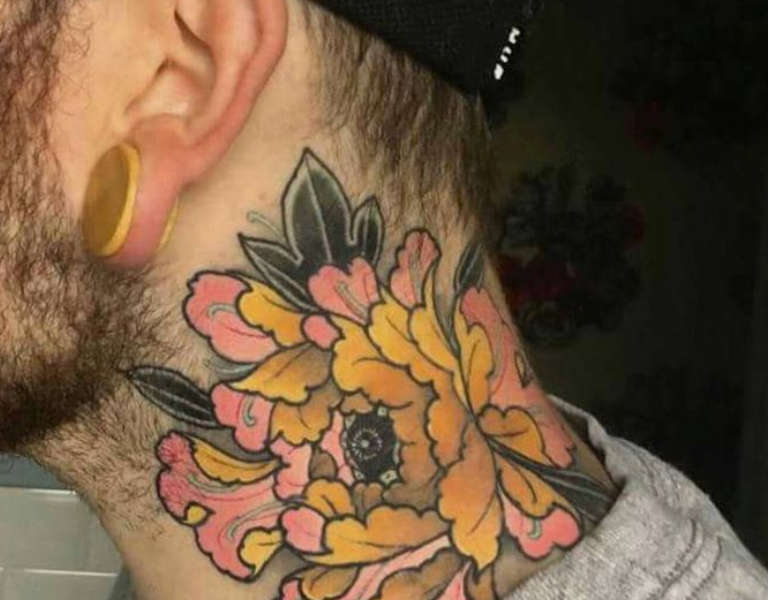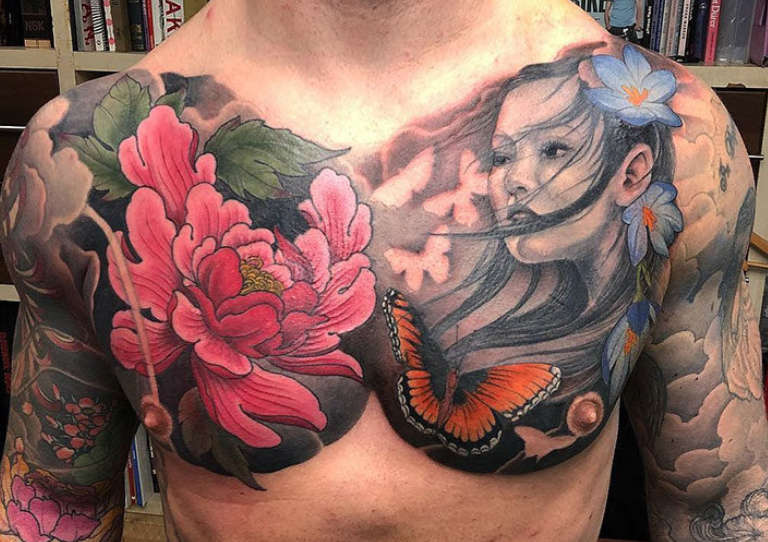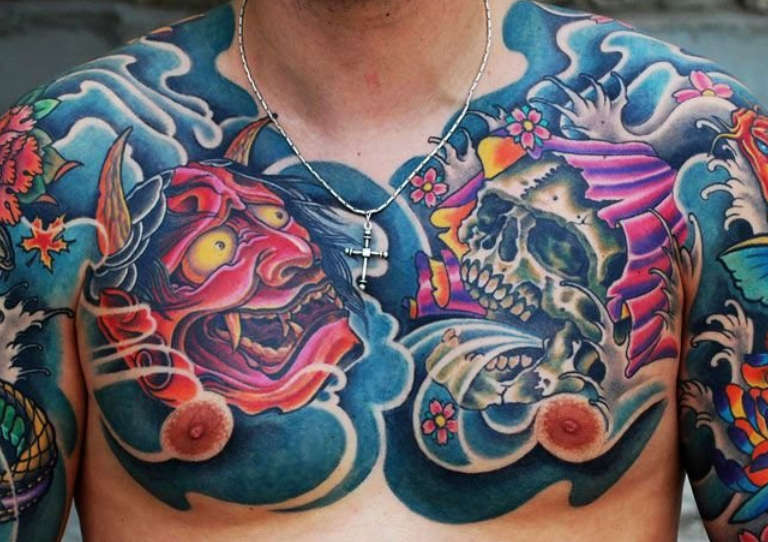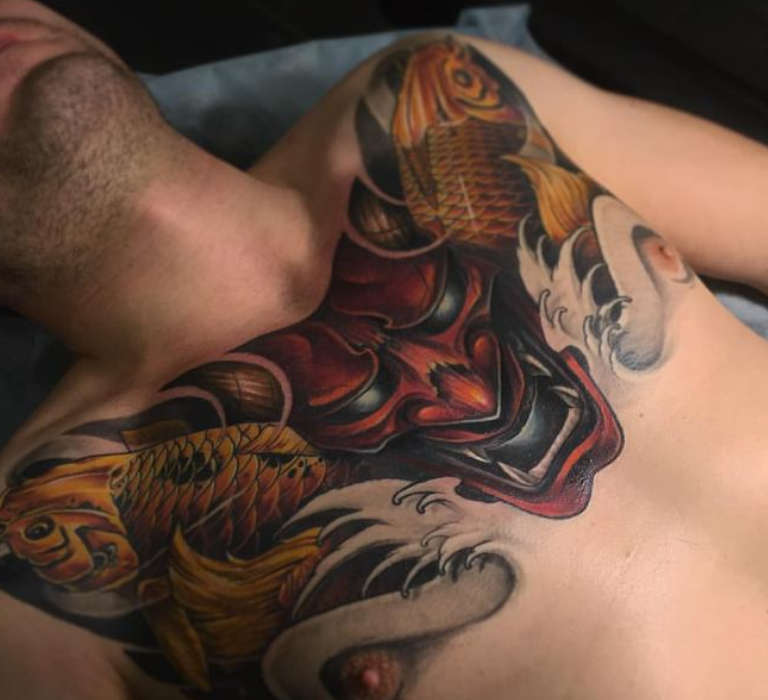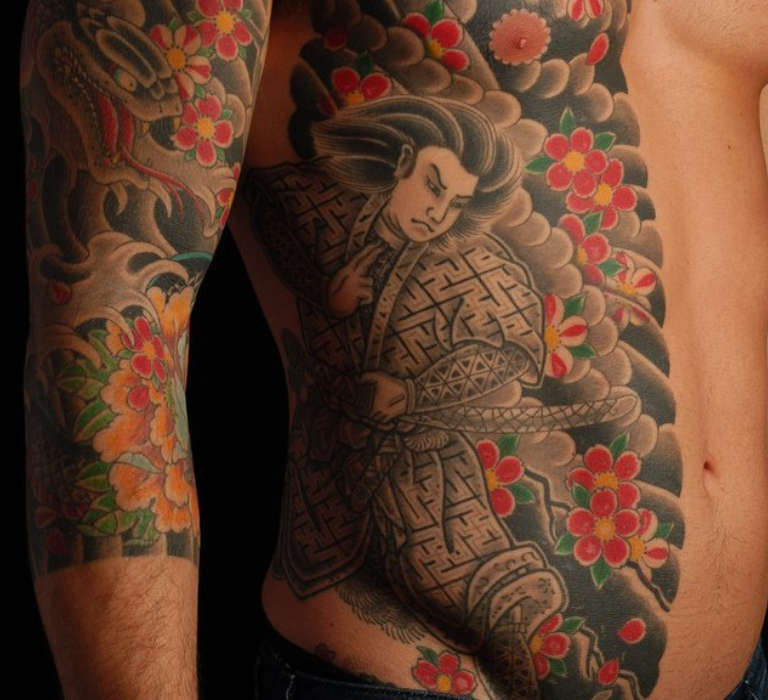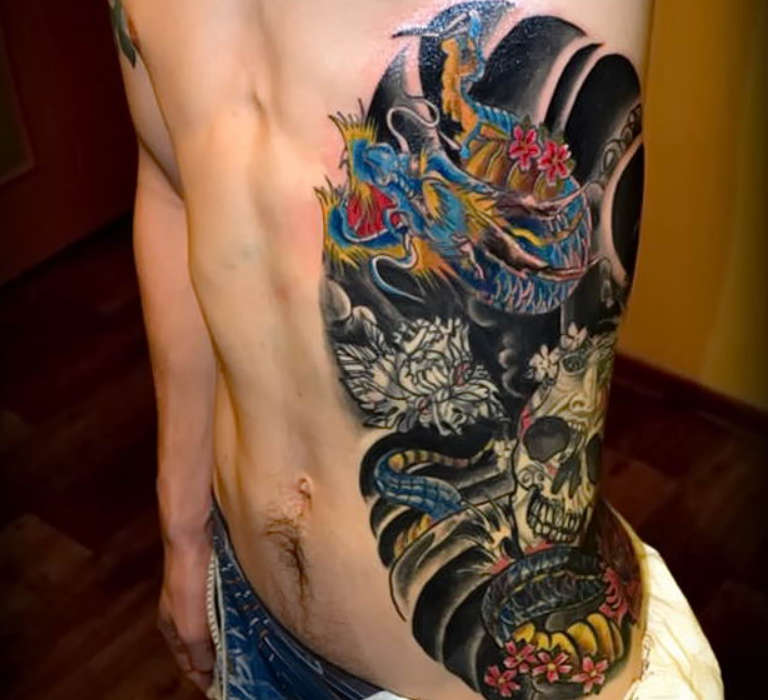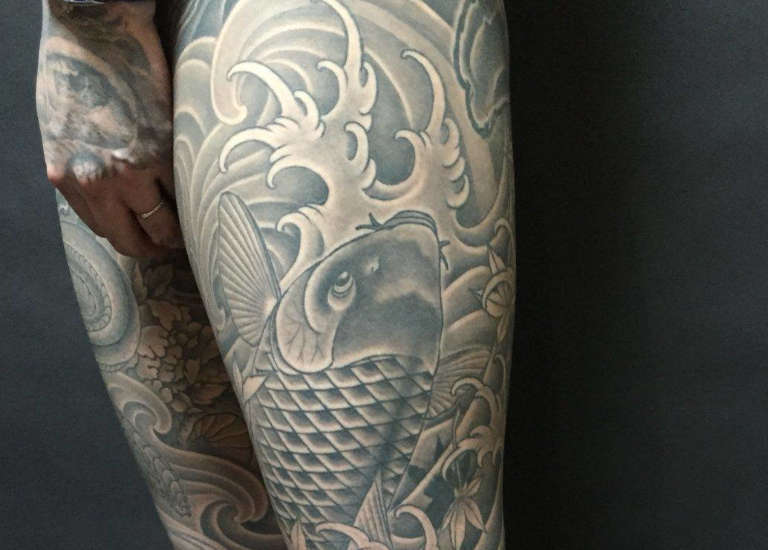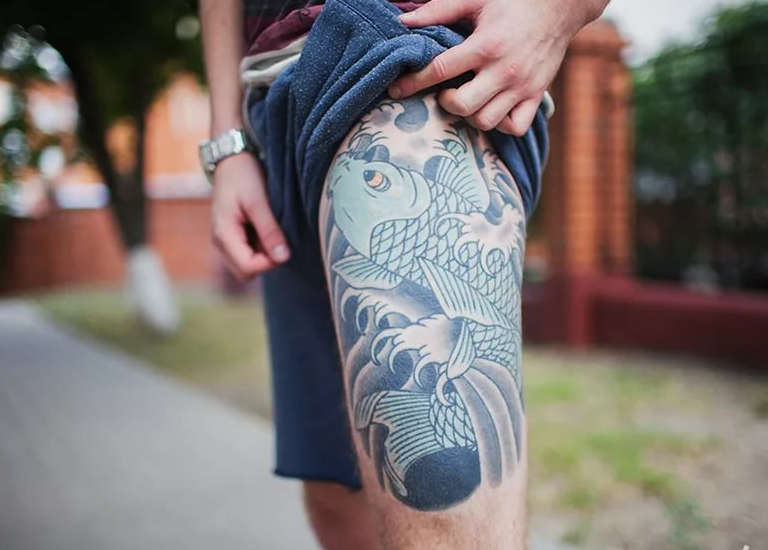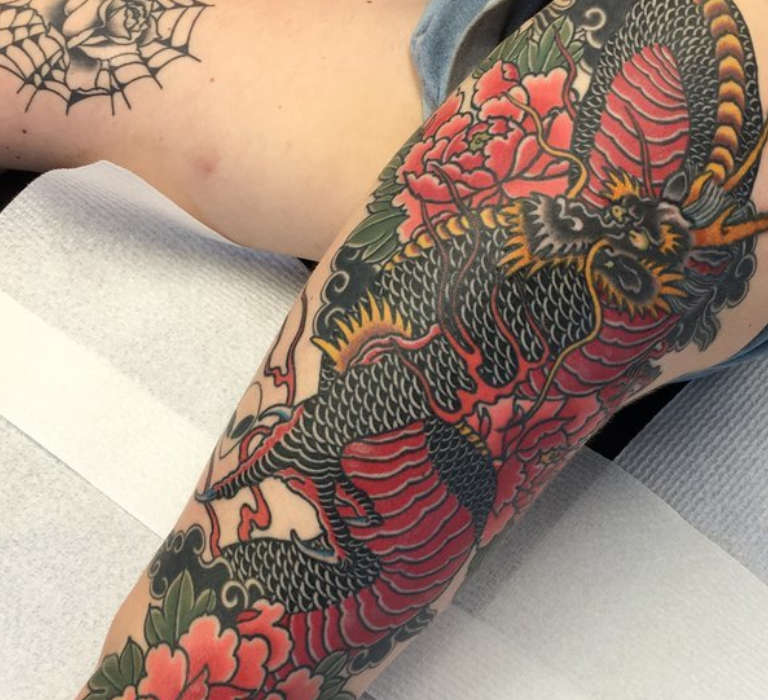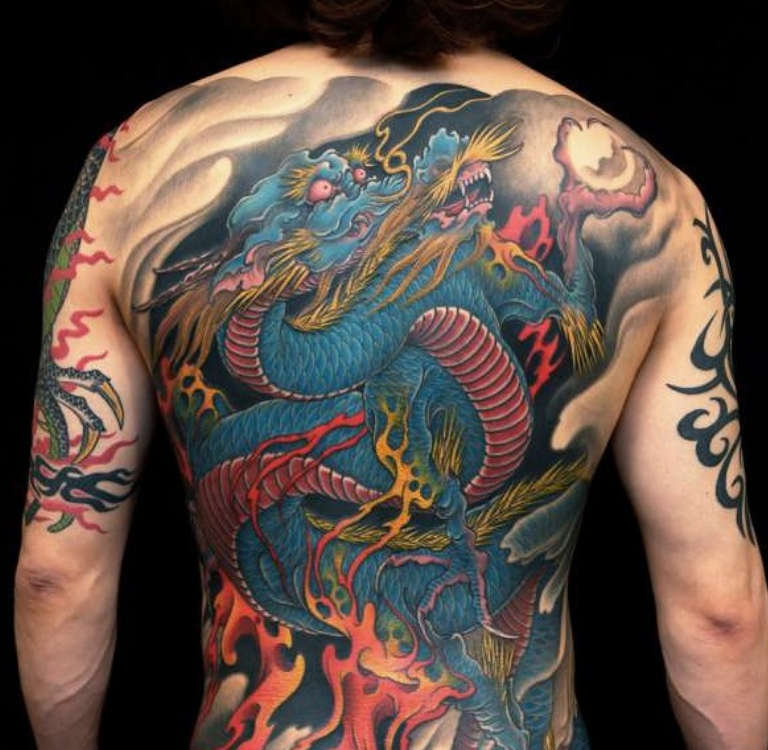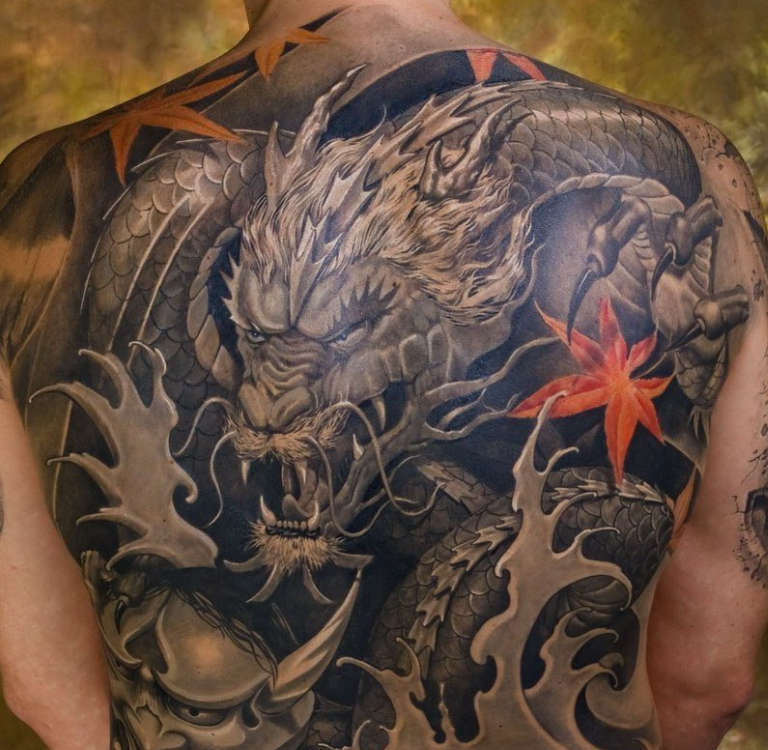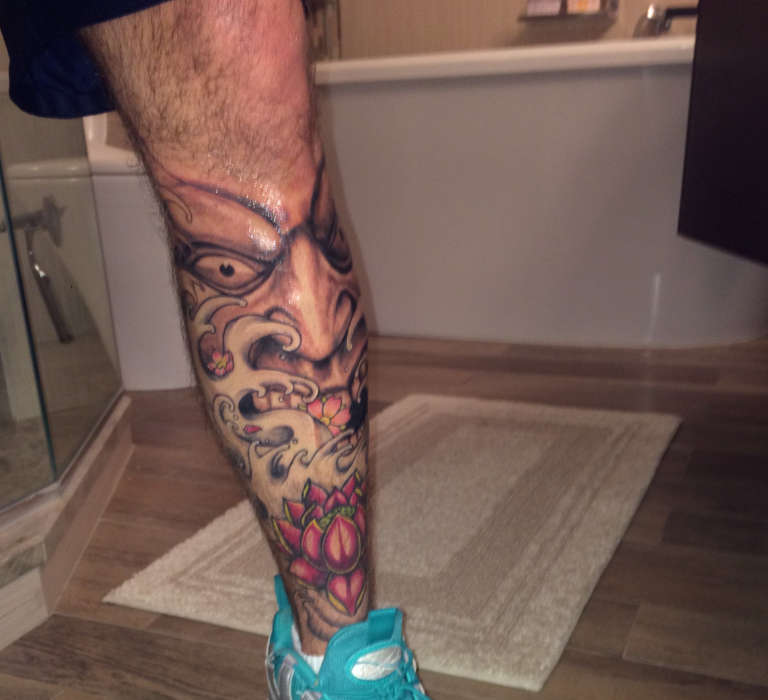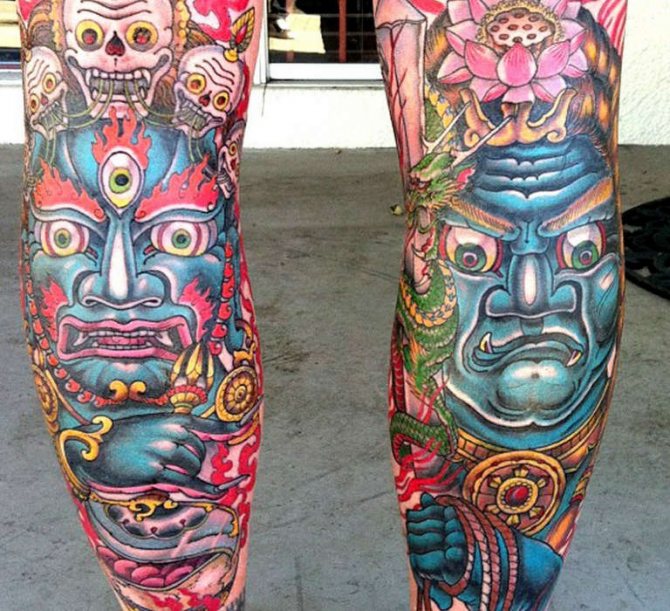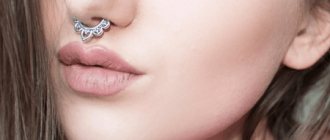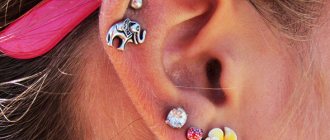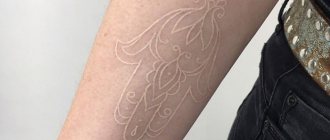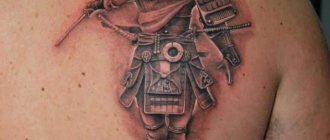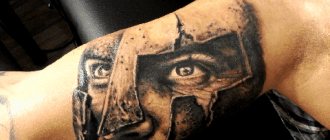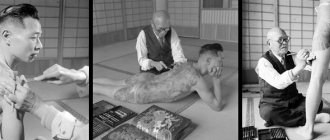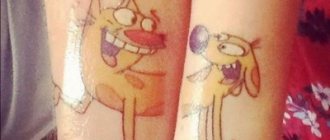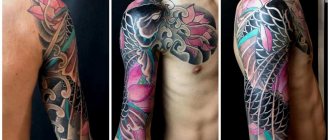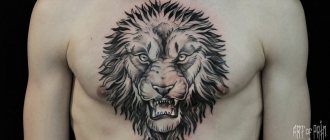Tattoos are widespread throughout the world, including the Japanese islands. Here with the help of body drawings men convey their spirituality, principles and values in life, position in society and social status. But most often Japanese tattoos for men are associated with the Mafia.
Initially in Japan, tattoos were applied to criminals as punishment, so today many such designs are spread around the world among prisoners. In addition, Eastern culture is distinguished by its spirituality and wisdom, hence the demand for Japanese tattoos. The best sketches, tips on choosing and applying to the body, styles and color solutions mono learn from the article below.
Japanese tattoos for men. The main varieties and their meanings
Tattoo in the Japanese style - a whole independent current in the tattoo culture, which has preserved to this day its traditions and canons. Each individual sketch, symbol, character and even a pattern carry a certain meaning and sacred meaning. The following sketches were popular in 2018-2019:
Turtle . - A symbol of wisdom, deep knowledge, as well as the presence of supernatural abilities, the ability to predict the future.

Dragon - tattoo represents the energy of the sun and fire, good luck and longevity. In Japan, dragons were drawn with three fingers on the limbs, the mythical character acted as a sacred guardian spirit.
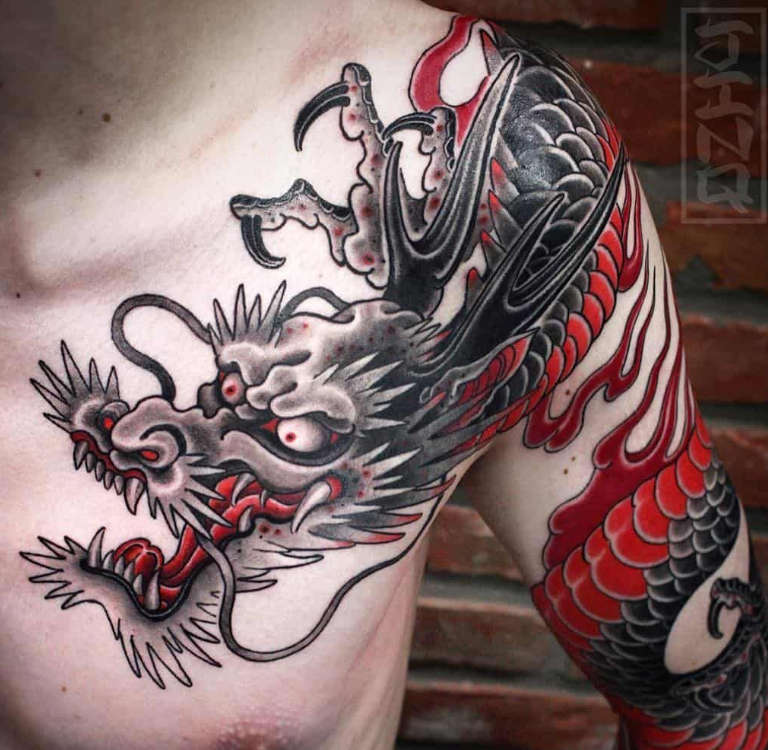

Snake - The Japanese believed that snakes had supernatural powers and protected them from trouble and misfortune. A tattoo with a snake coiled around a hammer was considered a talisman for good luck and success.


Tiger - A tattoo spoke of nobility, honor, courage, and masculinity of its wearer. It was also said in Eastern culture that tigers drive away evil spirits.
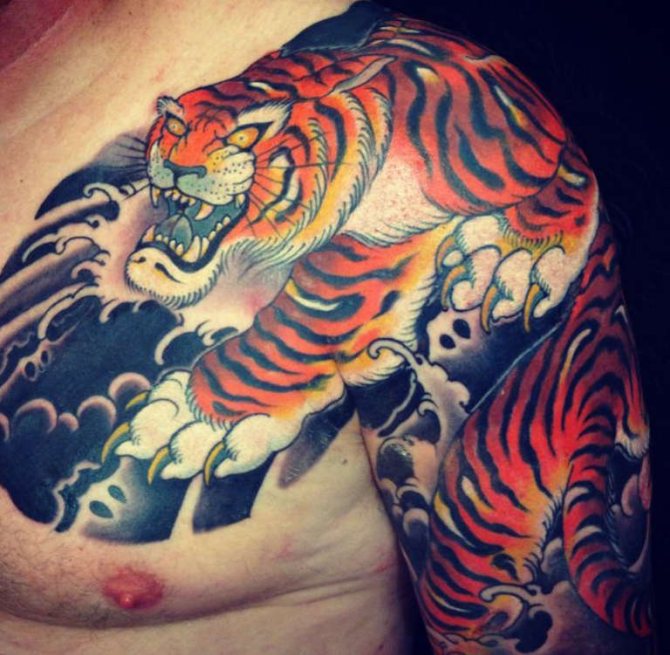

The Mask of Haniah - A drawing of an ancient spirit turned into a jealous girl. The tattoo is a reminder of what negative emotions and feelings can lead to, and also represents wisdom and intelligence.


Carp - A tattoo signifying courage, fortitude and endurance of the male character.
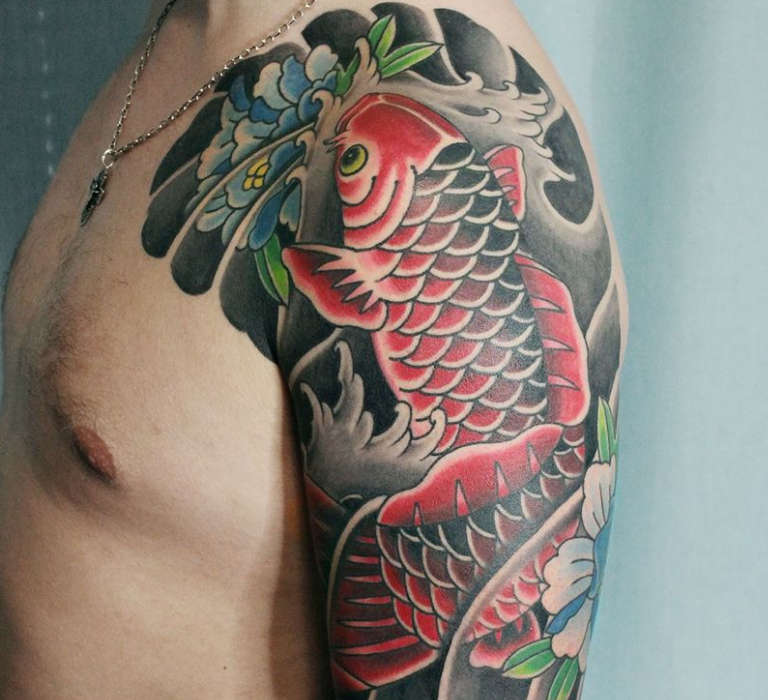

Peony - is a symbol of masculinity in Eastern culture, as well as a symbol of prosperity and financial well-being.
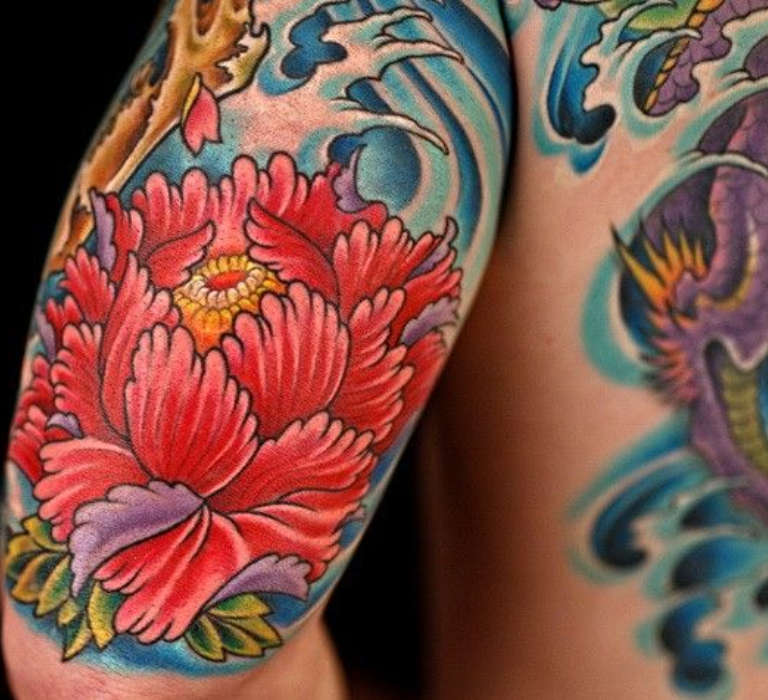

Sakura - A symbol of humility and understanding of the transience of life, as it blooms for only a few days.
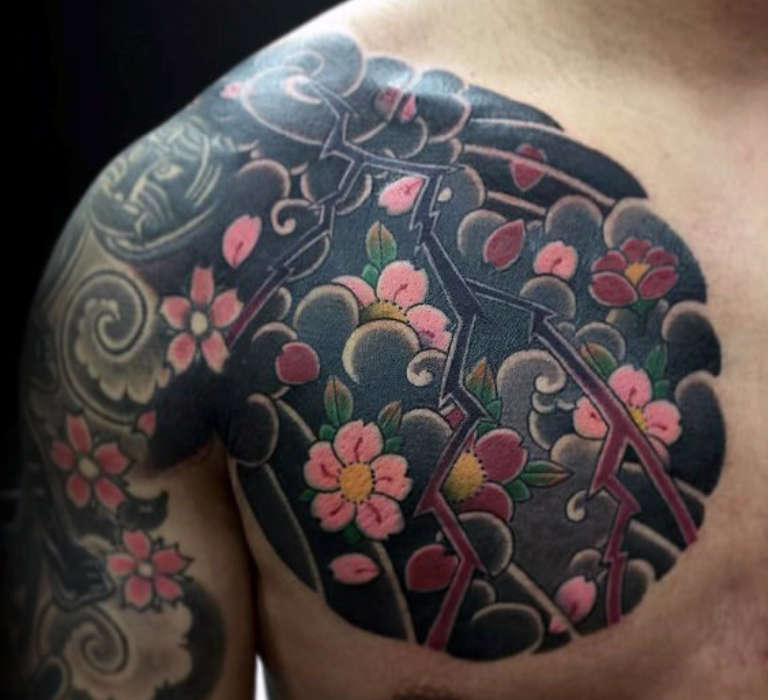

Magnolia - A beautiful flower that represents steadfastness and strength of spirit in a man, a firm stance in life.


Lotus - a symbol of spiritual purity, goodness, and the eternity of the human soul.


Yakuza - a symbol of the bandit gang and the mafia, representing fearlessness, courage and adventurism.


Samurai - warrior represents unselfish devotion, moral and physical perfection, love of freedom, reverence for the canons, laws and traditions.
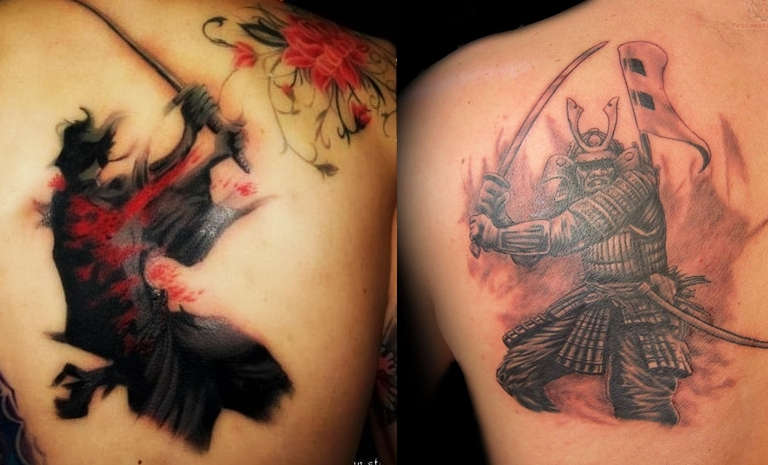

Nature, landscapes, waves - such background for a Japanese tattoo means balance, tranquility, harmony and mental equilibrium.
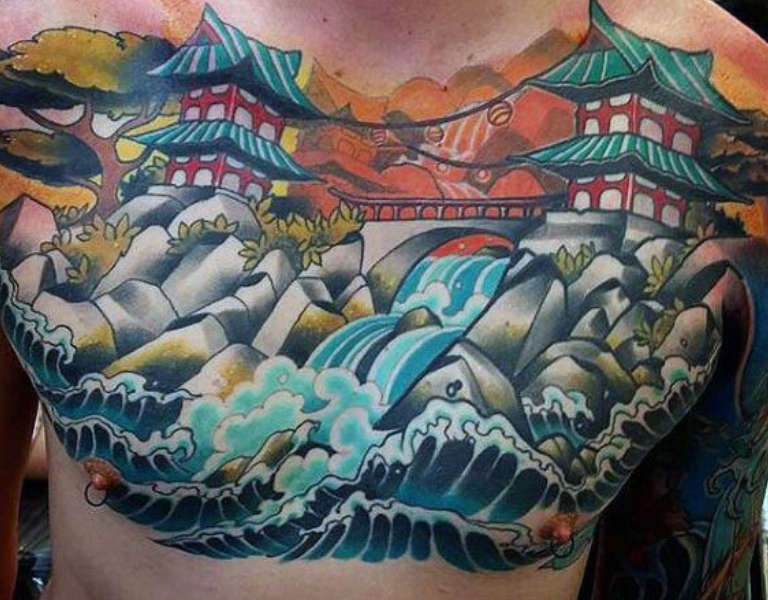

Hieroglyphs - writing that carries a clear and direct meaning depending on the written words.


Kintaro - A character from Japanese folklore representing the unity of a local fertility deity and a real, historical child figure. The tattoo usually depicts a naked child with red skin fighting a carp. The meaning of the tattoo is good luck, courage and bravery.


Maple Leaves. - Kintaro in a fight with a powerful carp, but dressed and older in age, armed with a dagger. Maple leaf in the tattoo symbolizes the autumn season, the man's love and steadfastness of his character.
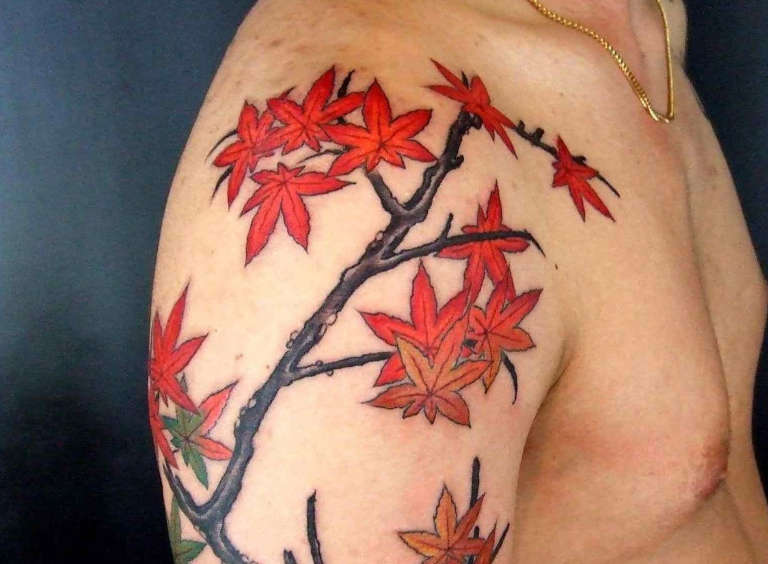

Rat ninja - In Eastern culture, the rat is compared to the deity of wealth (namely one of the seven gods of good luck). Tattoo means fertility, harvest, wealth and family, and ninja, because it has the art of disguise and sabotage.
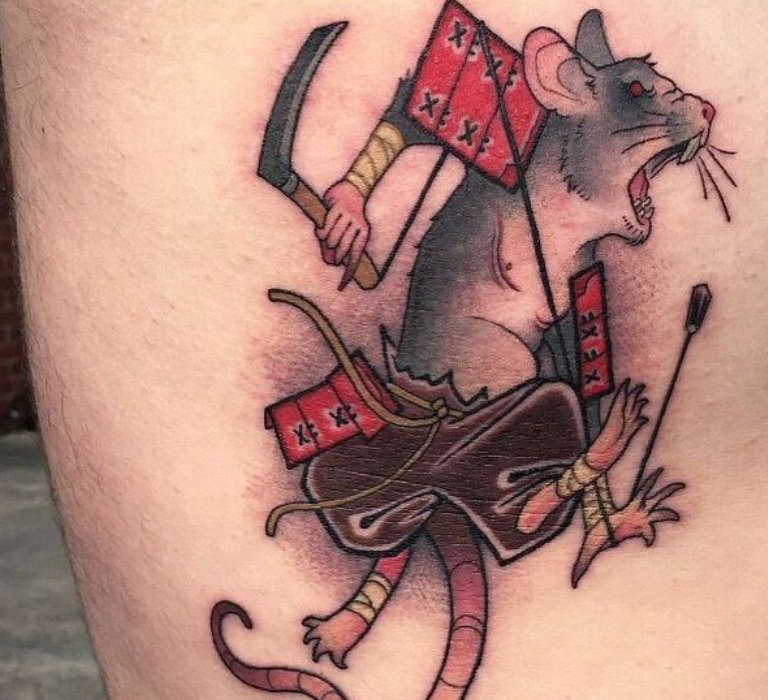

Phoenix - An eternal creature of mythology, reborn from the ashes. It means eternal love, no fear of death, hope for rebirth and renewal of the soul.


For reference! In Japanese culture today tattoo is associated with the mafia. The authorities of different cities often have a negative attitude towards tattoos in the Japanese, and people with tattoos on their bodies fall under their disfavor. For this reason, the Japanese hide the tattoo with clothing and choose secluded places on the body.
The meaning of Oriental tattoos
The popularity of Japanese tattoos is due to their extraordinary semantic content. For example, the tattoo on the arm symbolizes courage and determination, on the back - protection from a variety of threats. The leg is the place for a tattoo that attracts life's good luck, and the chest is the position for a fateful canvas that challenges the cruel world.


The most common images are:
- The wisdom of straightforward philosophical sayings is sometimes more important to the Japanese than the visualization of an idea, so it was not uncommon to put hieroglyphics on the body.
- Courage, determination and boldness can be displayed using images of the snake and dragon.
- A carp attracts money.
- Beautiful chrysanthemum or sakura blossoms represent courage for men and exquisite beauty for women.
- The best way to show masculinity is to score a tattoo with a mask in oriental style.
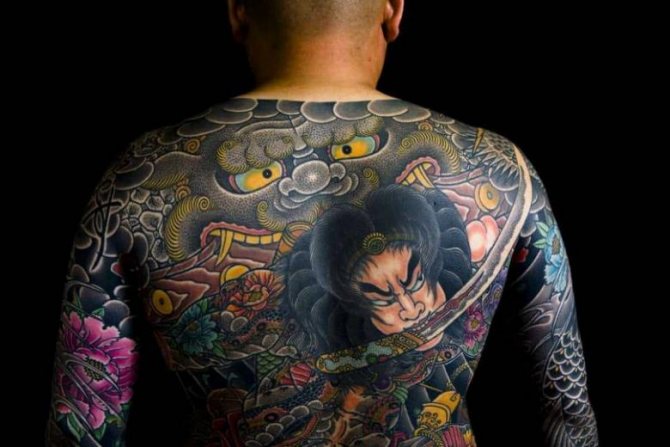

On what places men more often apply tattoos with Japanese themes
Only by choosing the desired sketch for a tattoo and understanding its meaning, a man can consider on which area of the body can be tattooed. The Japanese style accepts large and spectacular drawings, which means that more often choose spacious areas - arms, legs, back, chest.
Shoulder
On the shoulders of a man can visually assess his strength and reliability, so here you can place a medium-sized tattoo with animals or warriors, expressing strength and courage.
Forearm
On the forearm there will be more space, so here you can apply a whole composition of different sketches. But most often this beats Yakuza tattoos, as well as samurai and wild animals. Tattoo is demonstrative in nature, showing the surrounding qualities and principles of the owner.
Tattoo on the wrist
On the wrist it is difficult to place a large tattoo with the above-described options of sketches. As a rule, it can be a muzzle of a dragon, a tiger, a coiled snake, carps. Plant elements are also appropriate in a simple and concise design.
Tattoos on the palm, hand and fingers
On the hand, palm or fingers of the appropriate only one version of the tattoo - Japanese characters that carry a certain meaning and clear implication. As an option, originally on the hand will look miniature dragon, snake or turtle in the style of minimalism or graphics.
Tattoo sleeve
Sleeve - the most successful idea for the Japanese style of tattoo. Here you can not be limited with the size and scale of the tattoo, combine several animals, characters, and patterns at once. It is a whole artistic composition, covering the whole arm, and also providing a demonstrative nature.
Neck
Drawing a dragon or samurai on the neck is quite difficult, as the space is extremely limited. Here are usually beat inscriptions in Japanese, or depict only parts of animals - paw, trace, muzzle. Only tattoos with deep sacral meaning will be appropriate.
Chest
The chest is customary to have tattoos that protect against bad luck and dangers. Therefore, here you can put a picture of a dragon, dragon and tiger, other characters, complementing the picture with floral elements, inscriptions.
Side
On the side will fit a large and spectacular drawing, but it is necessary to choose tattoos of a non-trivial personal nature. For example, animals, which one would like to imitate, warriors to bring up wisdom and courage and much more.
Thigh
On the thigh, men rarely beat tattoos, as their meaning will relate to the personal and intimate component of life. As an option, here you can put a drawing of carp as a symbol of masculinity, a peony as a sign of masculinity, a wild animal as a personification of passion and a fiery temper.
Back
On the back you can place the largest and most complex sketch, such as a combination of animals symbolizing different energies, drawings of flowers and trees, a Japanese samurai. Drawing on the back is always a spectacular, bright and saturated option.
Scapula
Between the shoulder blades is located the energy center, which is responsible for the man's ego. Therefore, it is customary to impose here tattoos, bringing wisdom, humility, tolerance, balance. A striking example of this is the turtle or plant sketches.
Foot
On the leg will look original any animal in the Japanese style - dragon, tiger or snake. Often here drawings of warriors, and the composition is complemented by plant elements. The meaning of the tattoo should motivate a man to do the right thing and move forward.
Tattoos by Yakuza
Yakuza use tattoos to show their status. The technology of applying tattoos to a person's skin was also perceived as a challenge. The procedure was long and painful. Many yakuza treated tattoos as elements to complement their image. They skillfully combined capes and jackets to accentuate the design. By tattoos, Yakuza determined that a citizen had become a member of a segregated society. He could no longer marry women from "ordinary" families. The most popular tattoos were the following:
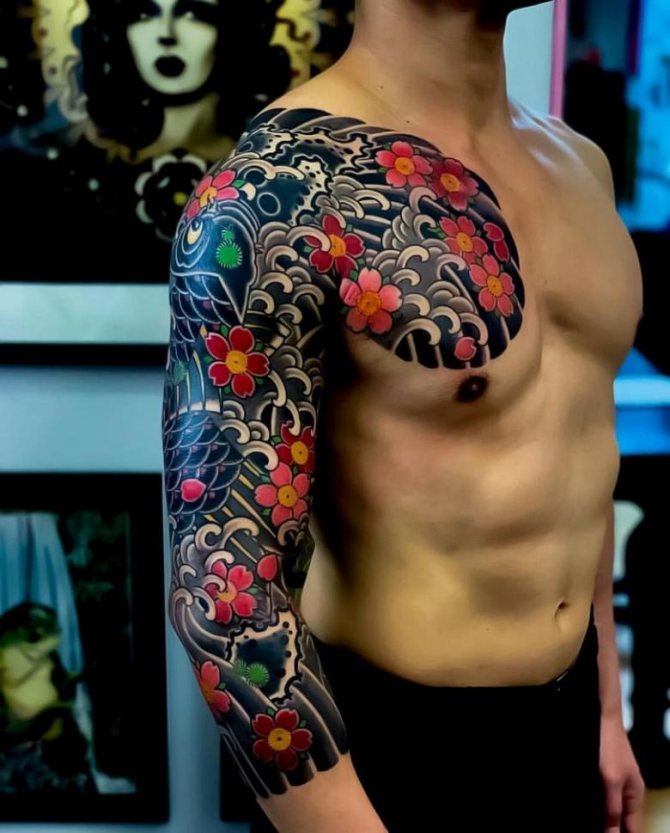

"Kintaro," an image of a mythical character who fought a huge carp;


"Kyumoryu Shishin" - this was a hero in Chinese clothes who practiced martial arts;


"Tyou Jun" was a hero with a knife in his teeth. It was done by those who thought he was an excellent martial arts master.


Recommendations for Japanese tattoos
Remember that Japanese style tattoos are always bright, large and complex sketches that require a long application, the use of quality paints and high fees. To choose a tattoo, decide on a few points:
- The purpose and objective of the tattoo - what exactly you expect from the tattoo, what changes in life and in yourself you want;
- sketch - make up your own author's drawing, other people's ideas can only be a source of inspiration;
- location - if it is a demonstrative tattoo, it can be placed in a prominent place, if it has a personal character, it must be hidden in a secluded place;
- style and color scheme - designate for yourself, what style of execution is closer to the meaning of the tattoo and your tastes, and also decide whether it will be a color or black and white tattoo;
- additional symbols - The scale and cohesion of the sketch is possible by filling in the blank spaces with floral elements or ornaments, the choice depends only on you.
Expert Opinion
Viola Madison
Master Tattooist, 8 years experience
The price for the execution of the Japanese tattoo is always quite high. This is due to several reasons, first, the tattoo is large-scale, the sketch is complex, and the work requires 3-5 procedures. Secondly, experienced masters use mixtures of herbal dyes and colorants instead of the usual paints in order to achieve the most similar performance to the Japanese culture.
What is important to remember before you score as a tattoo of Japanese characters?
Firstly, in order not to become the hero of one of the ridiculous stories, it is worth choosing well-known characters, the meaning of which is easy to check or to seek help in drawing up a sketch to professionals versed in the Japanese language.
Secondly, if you believe that every tattoo carries a symbolic meaning, it is worth remembering that a Japanese character may have several contradictory meanings. Therefore, you should be careful to ensure that the sign you choose means only positive things.
Also, you should not forget about the correct spelling. One missing line can drastically change the translation or simply make the symbol meaningless.
Before you get a tattoo with hieroglyphs you have to decide what language you want the inscription in. Chinese and Japanese letters are very similar - to the Western viewer they even look the same, but in fact they are not.
In addition to characters, the Japanese language has two other alphabets - hiragana and katakana - that are also used for body art. And, to learn what they differ from each other, we advise you to read an article on our website about the 3 Japanese scripts.
How to choose a tattoo sketch in relation to a place on the body?
There are several important tips on which you can predetermine the place on the body and the suitable tattoo sketch to it. Namely:
- On areas close to the head place tattoos with deep sacred meaning;
- In areas that are hidden from the gaze of the surrounding perform personal non-trivial options tattoo;
- large body areas (back, chest, shoulders, sides, arms and legs) are appropriate for large and complex tattoo compositions;
- small and laconic sketches are suitable for small areas of the body (hands, wrists, fingers, neck, shoulder blades);
- talismans, amulets, magical symbols are prohibited to put on the lower part of the body.
Remember that the emotional and sacral meaning of a tattoo must match the character, image, lifestyle and interests of its owner.
Do you like the Japanese style in tattoos?
YesNo
For Guys
Due to a slew of ironic comments online about character errors, the popularity of this trend has taken a downturn. If you're not a native speaker, you'd better not experiment with hieroglyphics. The slightest mistake will lead to complete distortion of the meaning of the inscription, which will make any Japanese person having a rest next to you on the beach or in the water park laugh. It is better to give preference to universal renderings - a carp, a tiger, a snake.
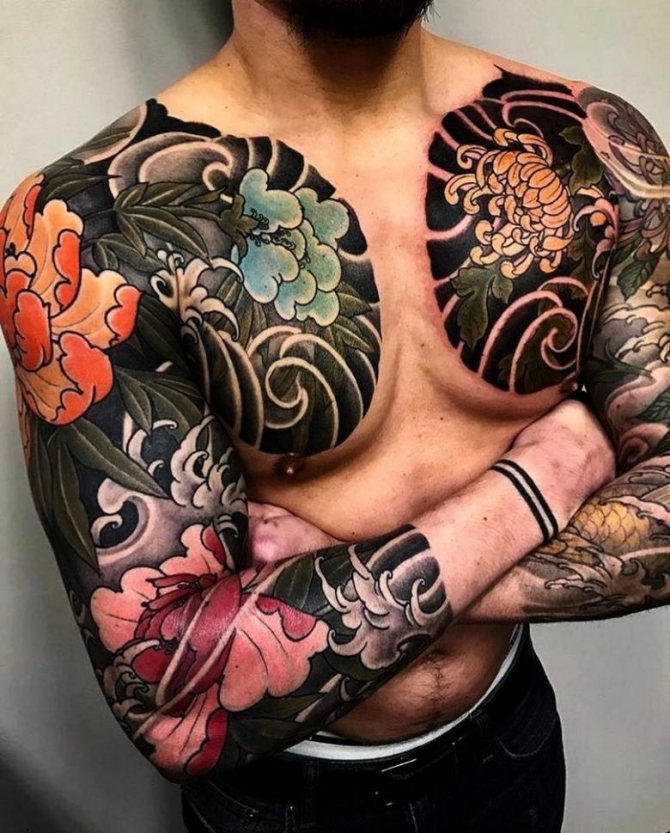

There is no need to engage in imitation, superficially using Japanese folklore and ethnic imagery. Study the tradition as carefully as possible, inquire about the misunderstandings revealed on Internet forums. It is also very important to investigate the influence of Japanese tattoos on a person's destiny. The system of images of this culture is filled with different demons and monsters, the meaning of which you need to know before beating a mask on your body.
Styles and colors of Japanese tattoos
The main and distinctive rule of execution of Japanese tattoos is the asymmetry of elements in the composition. The master must fulfill the outline of the drawing with smooth and thin lines, intensifying the brightness and saturation of colors from the center to the edges. Japanese sketches are most often executed in several styles:
Thrash polka dot. - the use of contrasting colors, a certain aggression in the execution of the drawing;


realism - maximum realistic execution of the picture;


watercolor - positive and colorful drawing without outlines and borders;
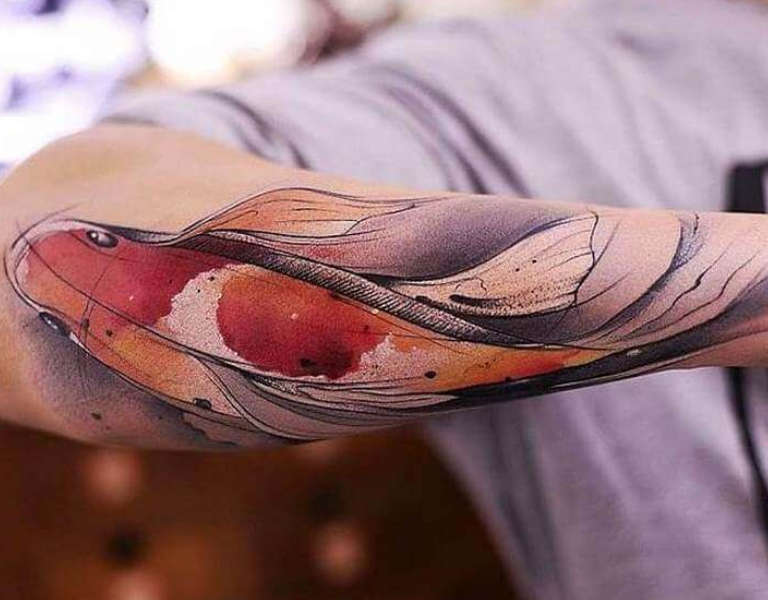

minimalism - Concise execution of the tattoo for a small area on the body;


black ink - The use of only black and white color scheme.


The master pays special attention to the color solution of the Japanese sketch, preferring the use of saturated colors - red, blue, green, yellow, etc.
Symbols which can be combined with the Japanese tattoo.
What symbols and additional elements to decorate the tattoo, decides the man himself, depending on the meaning of tattoo. Most often, the Japanese theme is joined:
nature - Mountains, rivers, moon, sun;


plant elements - flowers, sakura, trees;


wild animals - tiger, snake, turtle, dragon;


characters - inscriptions or numbers in Japanese;


hanja mask - intimidating and magical element.


When choosing additional elements a man must understand what exactly he wants to emphasize, what mood to bring to the overall composition of the tattoo. Masters often recommend that men complement the sketch with animals, fantastic characters from Japanese culture and mythology, inscriptions and flowers.
